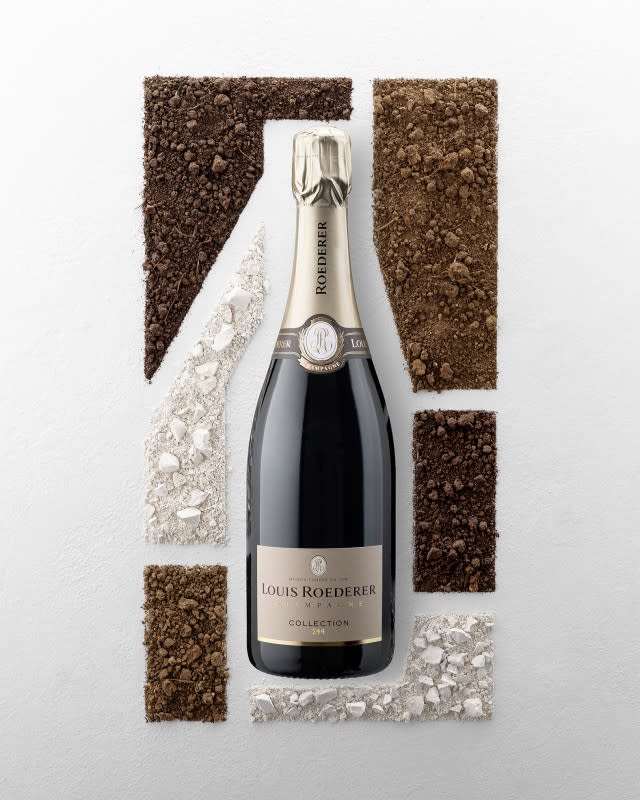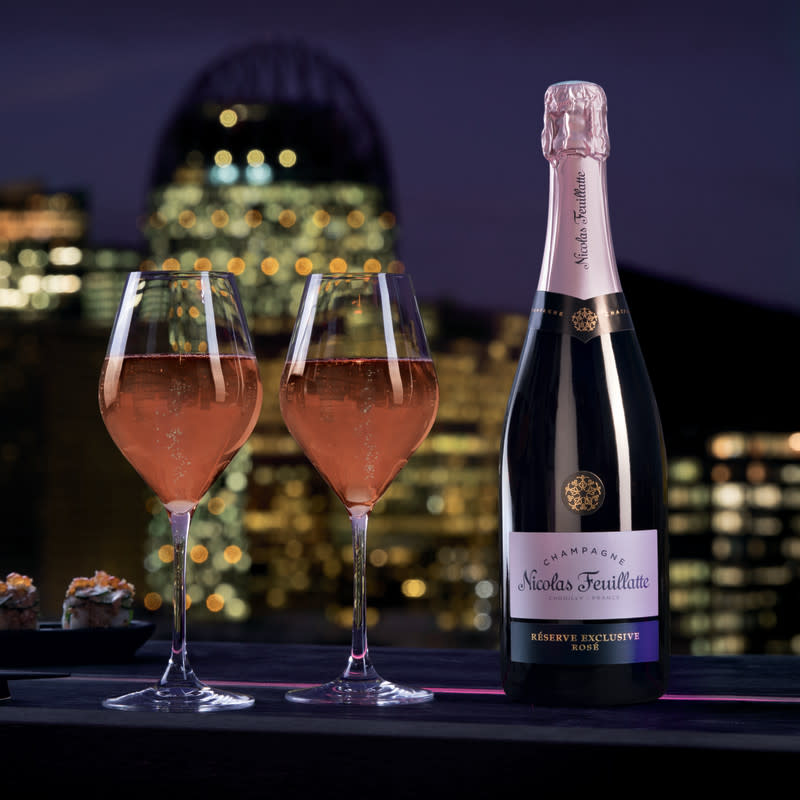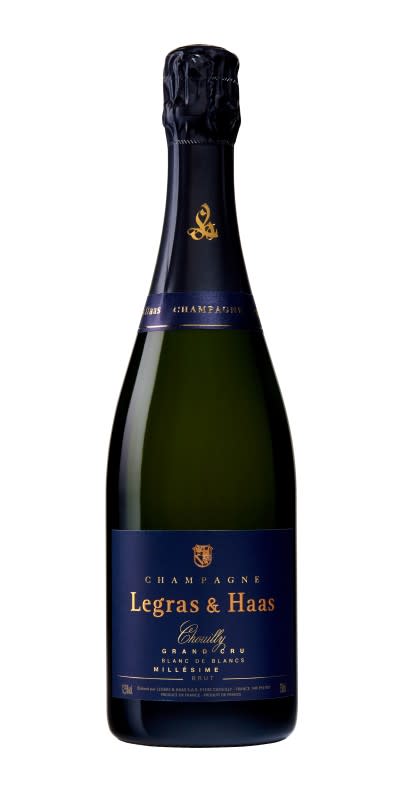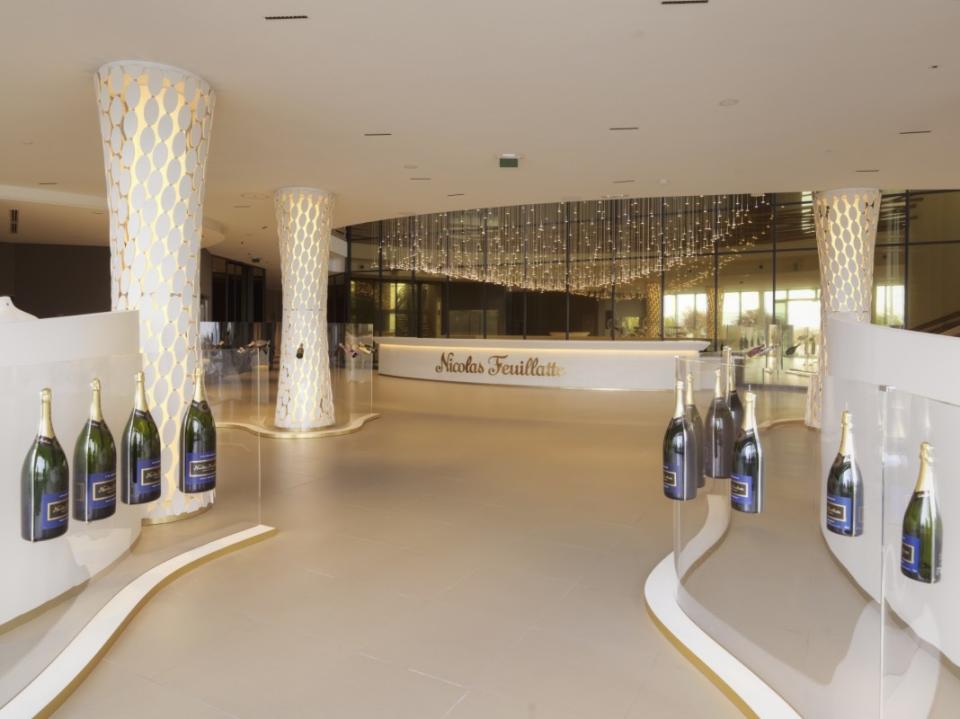What Corks To Pop For Global Champagne Day
Please know it goes without saying: we do not need a World Day celebrating Champagne to illuminate the brilliance found in every bottle of the magical elixir coming out of the region found about 125 kilometers east of Paris. That being said, October 27th is indeed Global Champagne Day and you better believe we are taking the opportunity to pop corks and take names! The secondary fermentation that takes a tart and relatively uninteresting still base wine and creates a Caterpillar-to-Butterfly-like metamorphic transformation was first discovered accidentally. In fact, the lead in to this magical re-fermentation was first discovered in the 17th Century by Monks in Limoux, a small winemaking area in the Languedoc region of Southern France. They allowed a delicate fermentation to continue, creating the ancestral method. A few decades later, a now infamous Monk named Dom Perignon devised the idea of controlling a second fermentation in the bottle, and thus creating the Champagne or traditional method. AND THERE WAS MUCH REJOICING. Today, Champagne is the international symbol of celebration. Thanks, Champagne!
Three Champagnes To Pop For Global Champagne Day

Courtesy of Champagne Louis Roederer
In a time of climate change, the virtuosity of Louis Roederer's savoir-faire combined with the freedom of its style delivers a remarkable new multi-vintage champagne.
With Collection 244, the latest opus of its multi-vintage champagne, Louis Roederer continues its quest to create the finest champagne possible taking an approach in which, every year, the deepest respect for nature is coupled with an art of blending that is both meticulous and free. An excellent example of Louis Roederer's ability to adapt its savoir-faire to climate change, this champagne, the 244th blend since the creation of the Champagne House in 1776, has attained great plenitude. It is wonderfully well-balanced with an incredibly luscious power and a superb freshness provided by the Réserve Perpétuelle.
An exceptional year and a bespoke blend - dry, continental and magnificently mature, from a year of record-breaking heatwaves, the 2019 harvest - 54% of the blend - was one of unusual intensity, creating fresh, dense wines with a masterful balance.
View the original article to see embedded media.
The 244 blend reflects the estate's historical origins: 1/3 from "La Rivière" estate, 1/3 from "La Montagne" estate, 1/3 from "La Côte" estate.
View the original article to see embedded media.
The 10% reserve wines, aged in French oak foudres, originating from previous years and from young plots on the "Cristal" estate, give Collection’s powerful and luscious character. As for the Réserve Perpétuelle, which began life with the 2012 vintage and has been enriched every year with wines from the latest harvest creating a template of endless complexity, it makes up 36% of the blend and provides Collection with its hallmark freshness and energy.
View the original article to see embedded media.

Courtesy of Champagne Nicolas Feuillatte
No. 1 Champagne in France; No. 3 Worldwide; No. 3 in the U.S. (Source: Nielsen Mar. 2023).
Founded in 1976 by Monsieur Nicolas Feuillatte, the group merged once in 1986 to become the Centre Vinicole-Champagne Nicolas Feuillatte (CV-CNF) and again in 2021 to form the Terroirs et Vignerons de Champagne. The group brings together over 6,000 member growers and 7,413 acres of vines, representing nearly 9% of the Champagne vineyard area.
Chief Winemaker: Guillaume Roffiaen; CEO: Christophe Juarez
11.3 million bottles sold in 2022 alone.
One of the only major Champagne brands to have a wine shop in Paris. The Éspace by Nicolas Feuillatte is located just steps from the Arc de Triomphe in the famed 8th arrondissement.

Courtesy of Champagne Legras & Haas
Champagne Legras & Haas was established in 1991 by François and Brigitte Legras (nee Haas) in Chouilly, where François’ family have been growing grapes for four centuries. Today the estate vineyards and winery is managed by their three sons, Olivier, Rémi and Jérôme. The Legras-Haas family cultivates 18 hectares of vines, comprised of 35 parcels, within Grand Cru Chouilly in the Côte des Blancs, which allows them to produce different expressions of Blanc de Blancs. In total the family farms almost 37 hectares in Champagne. As stewards of their vines, they respect and maintain the ecosystem so together they may deliver dynamic wines that are aromatic, graceful, fresh and ultimately expose a beguiling complexity.
A Legras and Haas vintage reflects both the year and the place as it’s a single cru, estate-grown wine. To become a vintage wine, the year must deliver a certain austerity that promises aging potential and a touch of originality, an unusual character that makes it exceptional. While a millésime may come from any of the family’s parcels, most often it is largely comprised of grapes from their plots around Mont Aigu, which has an older chalk layer and delivers intensity, elegance, freshness and minerality in the finished wine.
Vineyards: Grand Cru Chouilly, 100% Estate | Composition: 100% Chardonnay
Vintage: 2015 | Bottled: April 2016 | Disgorged: April 2022
Maturation: 72 months | Dosage: 6.0 g/L | Total Acid: 6.3 g/L | Alcohol: 12.5%
View the original article to see embedded media.

Courtesy of Champagne Nicolas Feuillatte
MK: How is the demand for Champagne doing in the post-covid rebound?
GF: We believe that covid was the catalyst for a major mindset change for society. It both enabled and required us to take a step back and really appreciate the small things in life. And with that, the belief that there is no better time than right now to start living life the fullest. Champagne has historically been deemed a ‘special occasion’ wine.
But Champagne Nicolas Feuillatte, who is a very young brand in comparison to other houses, always believed that Champagne can and should be enjoyed by anyone, anywhere, anytime! A random Tuesday night…absolutely. Paired with your takeout Thai Food…of course!
With the perspective shift that many experience post covid, we have seen an alignment where more and more people are enjoying Champagne on a regular basis!
On the sales side of things, the Champagne market is still bullish due to the strong recovery of the On Trade networks. In key states, the activity is driven by the celebration craze and the demand for premium brands has deeply transformed the mix. Activation of allocation systems within many Champagne houses led to shortages, giving room to other players like us. High interest rates are stressing inventory levels inside the three-tier system. As a result, discrepancies start to show up in areas where price sensitivity is high. OTC sales are under scrutiny and brand awareness is clearly making the difference compared with unknown producers. Nicolas Feuillatte stands out as #3 in the US.
Nicolas Feuillatte’s positioning as an affordable luxury was particularly accurate during this period of post Covid recovery. We added new listings which revealed the potential of the brand name through by-the-glass programs and hospitality brunches.Awareness and loyalty increased substantially and led to more and more opportunities. We reached the milestone of one million bottles shipped to the USA in 2022 for the very first time!
MK: Are you noticing the younger generation is embracing Champagne as their sparkling wine of choice?
GF: Historically, younger generations have been more intimidated by Champagne given its high prestige and association with affluence and special occasions. But establishing Champagne as a wine that is enjoyed by and welcoming to all has been a crucial part of our brand from the start. Disobedient Champagne is in the brand’s identity - meaning we do things a little differently. Champagne Nicolas Feuillatte is the youngest of the major Champagne Houses, which against all odds succeeded in not only democratizing Champagne, but in less than 40 years, becoming France’s favorite Champagne in record time – and the US’s third.
With this identity of disobedience, we are on a mission to disrupt the industry; a mission to which we proudly attribute our rapid growth. We have championed the idea that when it comes to Champagne there is “no occasion necessary”. We encourage any and all Champagne lovers to savor every moment, both large and small. There is no specific time or contrived code to unleash the bubbles.
MK: What narratives help drinkers think of Champagne as a perfect pairing wine and not just for occasions of celebration?
GF: For many people across the world, and still even in France, Champagne is viewed as an aperitif, rather than a pairing wine. Yet, there is no reason to relegate Champagne to solely before the main meal. Champagne is such a versatile wine and we love to see the shift towards an awareness of that fact.
Champagne is a drink that can and should be enjoyed by anyone, anytime, with many foods. The brightness of the fruit, high levels of acidity, and low levels of sugar make Champagne a beautiful wine for pairing. We always love experimenting and discovering unexpected foods that compliment Champagne and vice versa.
For example, our Réserve Exclusive Brut, our ‘blue’ label, goes with pretty much
everything! Classically, Blanc de Blancs is awesome with oysters, lobster, fish and caviar while Réserve Exclusive Rosé goes with pink food – that’s easy to remember: salmon, tuna, crab, prawn, duck, Prosciutto and light red fruit desserts, of course.
But beyond that, we encourage people to explore! Less conventional pairings are equally delicious: I love French fries with Champagne. Each crunchy-salty bite makes you want a sip and vice versa. Steak is risky but works well with a rosé de saignée, such as our Palmes d’Or 2008 Rosé Intense which is 100% Pinot Noir and cuts through the richness of the red meat. Demi-Sec has been left behind for a while but is now rediscovered with contemporary food such as foie gras and spicy cuisine. It is really versatile and can match an Indian or Thai curry, Cajun chicken and even a tajine from Morocco. But my absolute favorite is Champagne with cheese! Parmesan, an old Gouda or a simple fresh goat cheese are amazing with Champagne, for example.
MK: Are there any innovations happening in cellar that you care to tease or share?
GF: We have a dedicated team working on research and developments. We are constantly aiming to improve our process while keeping within the strict rules of our Appellation.

